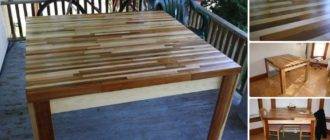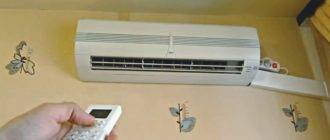The easiest way to change the interior of a room is to re-paste the wallpaper. This work does not require huge costs, and its result will delight the owners for more than one year.
You can do this easily and on your own if your walls do not require special professional training in the form of careful alignment. The main task is to choose the appropriate option and correctly calculate the required number of rolls.
But, before you go to buy wallpaper, you should decide in advance on the future style of the room or build on the existing interior.
- If it's a romantic honeymoon bedroom or a young girl's room, choose delicate flowers with thin lines or damask patterns in muted pastel colors.
- If this is a room where natural materials are present in the decoration, then you should choose wallpaper with natural motives, flowing floral patterns, or a plain canvas of natural color.
- If this is a modern Art Nouveau room, consider bold geometric patterns lavishly flavored with metallic sheen, or large-scale flowers in matching vibrant hues.
- If this is a traditional living room, then choose damask patterns or stripes - they go well with the strict lines of furniture.
Remember that wallpaper in cool colors is perfect for a well-lit space. But if the room is located on the north side and the sun looks there infrequently, then it is better to take wallpaper in warm colors.
Next, you need to think about how you will paste over the room. Here are the different options:
- Pasting all four walls with the same wallpaper. The classic, simple design will refresh your room, adding light and style without distracting from the details. This type of pasting is ideal for small rooms, densely packed with furniture.
- Select one wall. Choose a bright, bold pattern to highlight an area of the room, such as behind a sofa or bed. It is advisable to take the rest of the wallpaper in plain color or with a minimal pattern, for example, with a thin stripe. As a rule, large stores offer ready-made options for combining canvases, and you do not have to rack your brains over their choice.
- Wallpaper with molding. If the scale of the room allows your imagination to roam and gives scope for creativity, then we suggest using a molding. Part of the wall is pasted over with one or two canvases of wallpaper, and their edges are framed with molding. Another option is to run it at a distance of 1-1.5 meters from the floor, as if dividing the wall into two parts, which can be pasted over with different wallpapers that match in style.
- Continuation of the ceiling. If you are pasting the ceiling, then you can make it a continuation of the wall. To do this, the ceiling wallpaper goes down to the wall, where it can go from a monochromatic color to fancy patterns. The main thing is to skillfully combine shades or choose a ready-made composition.
Wallpaper base
After determining the color and style of the picture, you need to choose the base material.
Today there are two options - paper and non-woven.
- Paper wallpapers are inexpensive and environmentally friendly, but completely unsuitable for decorating rooms with high humidity. They quickly fade and lose their presentation.
- Non-woven are suitable for absolutely any room, they do not deform during the pasting process, since the glue is applied directly to the wall itself. They can be washed and even painted.
Choosing types of wallpaper
- Textured wallpaper helps to add volume to the wall, as well as make small displacements invisible and hide the unevenness of the wall. Some textured wallpapers can be dyed to blend perfectly with the décor of the room.
- Avoid small patterns. If you are pasting wallpaper for the first time, avoid small patterns with clearly drawn details.It is quite difficult to fit them according to the drawing and calculate the number of rolls required for the room.
- Wall murals are suitable for perfectly aligned walls, require special skill, so you should not undertake large-scale work on gluing them, so as not to be disappointed with the result.
- Textile ones have a silky surface and create the effect of three-dimensional space, but they also cost an order of magnitude more.
Determining the number of wallpapers to buy
To determine the required number of rolls, follow the instructions below:
- We measure the length of all walls, add this data and get the perimeter of the room. For example, 3 + 5 + 3 + 5. The perimeter is 15 meters.
- Next, we calculate how many canvases will be required to paste over our perimeter. To do this, divide the perimeter by the roll width (you can find this number on the label). Always round up the resulting figure. 18 / 0.53 (roll width) = 33.96, round to 34
- If the wallpaper does not require fitting, then we can safely divide the number of meters per roll by the ceiling height and find out how many canvases 1 roll of wallpaper is enough for. For example, the ceiling height is 2.5 m.10 / 2.5 = 4. that is, exactly 4 canvases will be obtained from one roll.
- If the wallpaper has a pattern that requires fitting, then the height of the rapport (pattern) should be on the label. Then the height of the canvas is calculated a little differently - the height of the rapport is added to the height of the walls.For example: 2.5m (ceiling height) + 0.64m (rapport) = 3.14m.
- We calculate the number of whole canvases that we get from one roll. To do this, we divide the length of one roll by the estimated height of the canvas. 10 / 3.14 = 3.1
- Next, we calculate the required number of rolls - we divide the total number of canvases into canvases from 1 roll. 34/4 = 8.5 rolls of unadjusted wallpaper. 34 / 3.1 = 10.9 rolls with fit pattern. It should be rounded up to the nearest whole value.
- In conclusion, do not forget about doors and windows. One standard door and window saves 2-3 canvases of wallpaper.











